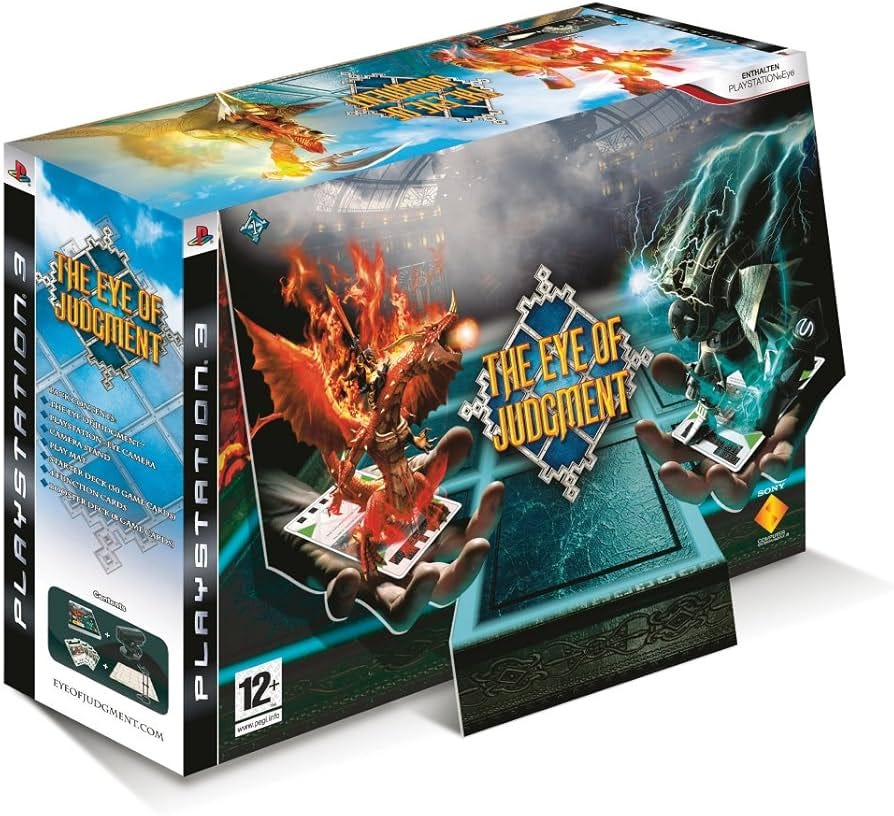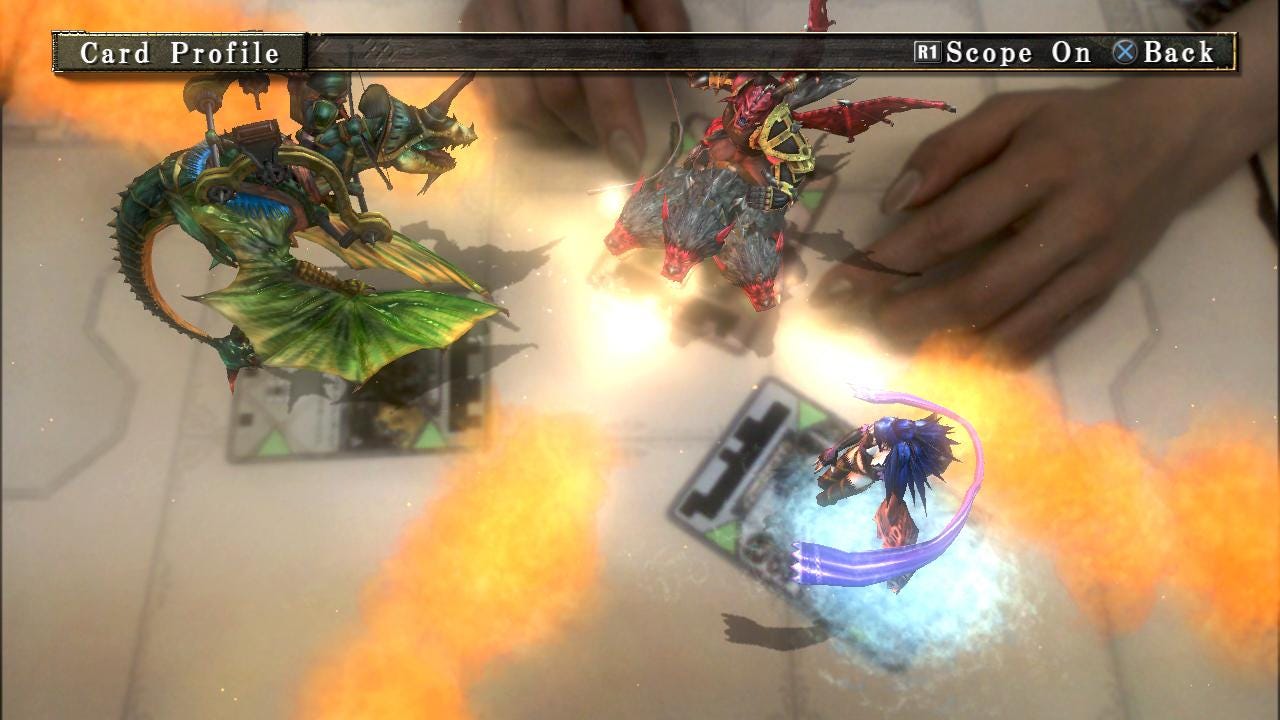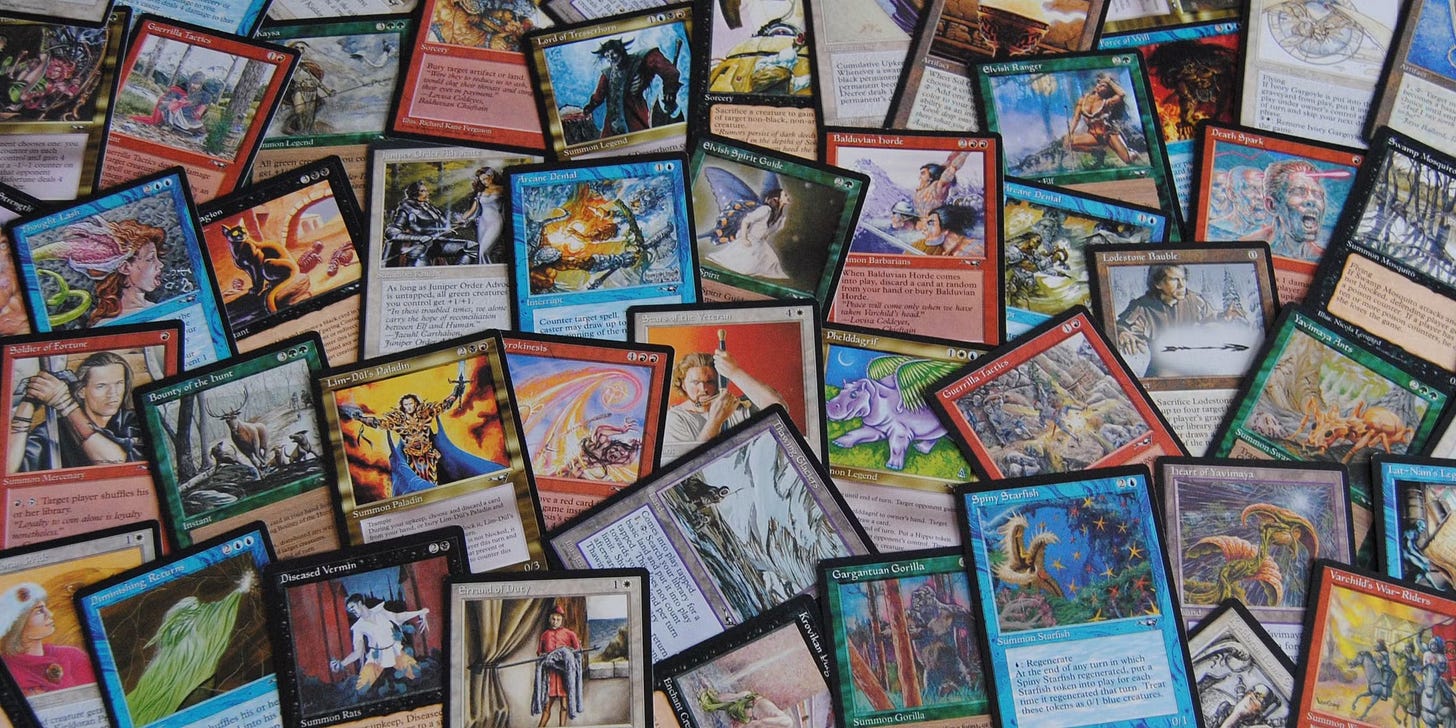AR TCGs: The Legacy of The Eye of Judgment and Future Opportunities
The game utilized the PlayStation Eye camera, a cloth playmat, and physical cards embedded with fiducial markers
The Pioneering Vision of The Eye of Judgment (2007)
Released in 2007 for the PlayStation 3, The Eye of Judgment (EoJ) represented a bold fusion of physical trading card games (TCGs) and augmented reality (AR) technology. Developed by Japan Studio and published by Sony, the game utilized the PlayStation Eye camera, a cloth playmat, and physical cards embedded with fiducial markers. When players placed cards on the mat, the camera recognized their positions and rendered 3D animated creatures on-screen, creating a hybrid experience that mirrored the fantastical duels depicted in anime like Yu-Gi-Oh!.
The game’s mechanics were rooted in traditional TCG strategy: players competed to control five of nine grid squares on the playmat by summoning creatures, casting spells, and manipulating elemental affiliations. Each card had unique abilities tied to its element (fire, water, earth, etc.), and mana points governed actions per turn. The AR integration aimed to enhance immersion, transforming static cards into dynamic battles with creatures clashing in real-time. Despite its innovation, EoJ faced significant challenges. The PlayStation Eye’s reliance on precise lighting conditions often led to recognition errors, and the physical setup-camera stand, playmat, and card management-clashed with the casual accessibility expected of console games.
Why The Eye of Judgment Failed to Catalyze a Revolution
Several factors contributed to EoJ’s niche status and eventual discontinuation of online services in 2010:
High Hardware Barriers: The game required a PlayStation 3, a PlayStation Eye camera (~$40 at launch), and physical cards sold in blind booster packs. This created a steep entry cost compared to purely digital games.
Niche Audience Overlap: TCG enthusiasts were already invested in established franchises like Magic: The Gathering (MTG) and Pokémon TCG, while casual gamers found the learning curve prohibitive.
Logistical Fragility: Physical cards were prone to wear, and the PlayStation Eye struggled in suboptimal lighting, undermining the AR illusion.
Market Timing: In 2007, AR was a nascent concept lacking mainstream traction. The technology’s novelty overshadowed gameplay depth, leading critics to dismiss EoJ as a “camera gimmick”.
The Modern AR Landscape: Glasses, Tabletop Hybrids, and Lessons from Demeo
AR Glasses and the Erosion of Hardware Barriers
A decade after EoJ’s release, advancements in AR glasses-such as Apple Vision Pro, Xreal (formerly Nreal), have redefined hardware accessibility. These devices integrate cameras, sensors, and spatial computing into wearable formats, eliminating the need for external peripherals like the PlayStation Eye. For instance:
Apple Vision Pro uses eye-tracking and hand gestures to manipulate virtual objects, enabling seamless interaction with physical environments.
Xreal Air 2 projects AR overlays onto lightweight glasses, offering portability for tabletop gaming.
These innovations address EoJ’s core hardware limitations. AR glasses could scan physical cards and render animations directly into the user’s field of view, bypassing clunky camera setups. However, adoption remains hindered by high costs (e.g., Vision Pro’s $3,500 price tag) and the lack of a “killer app” to justify purchases beyond early adopters.
Demeo and the Rise of Digital Tabletop Gaming
In contrast to EoJ’s hybrid approach, Demeo (2021) exemplifies modern AR/VR tabletop gaming’s shift toward fully digital experiences. Available on platforms like Meta Quest and Apple Vision Pro, Demeo recreates dungeon-crawling board games in immersive 3D environments. Players manipulate miniatures and cards using hand gestures or controllers, with cross-platform support enabling mixed-reality sessions.
Key advantages over EoJ’s model include:
No Physical Components: Demeo’s purely digital cards and miniatures eliminate logistics like shipping and storage.
Scalability: Updates and expansions are delivered via downloads, avoiding the need for booster packs.
Social Accessibility: Crossplay between VR, AR, and flatscreen devices broadens its audience.
Yet Demeo’s success also highlights a trade-off: the loss of tactile engagement that physical TCGs provide. This dichotomy underscores the unresolved tension in AR tabletop gaming-digital convenience versus the irreplicable satisfaction of handling physical cards.
Reimagining The Eye of Judgment for the AR Glasses Era
Hybrid Models: Bridging Physical and Digital
For AR-enhanced TCGs to thrive, they must leverage the strengths of both physical and digital mediums. A modern EoJ-like game could:
Use AR Glasses for Dynamic Overlays: Scan physical cards to display animations, stats, or interactive effects (e.g., a holographic Charizard breathing fire).
Embed NFC Chips or QR Codes: Modern cards could include embedded tags for instant recognition, reducing reliance on visual markers and improving accuracy.
Integrate Blockchain for Provenance: Numbered limited-edition cards (e.g., “15/250”) could be minted as NFTs, certifying authenticity and enabling secondary markets.
Case Study: Pokémon TCG and Magic: The Gathering
Industry giants like Pokémon TCG and MTG are prime candidates for AR integration. Both franchises have experimented with digital companions (e.g., Pokémon TCG Live, MTG Arena), but none have fully embraced AR. Potential strategies include:
AR Booster Packs: Scanning a physical booster pack could unlock digital variants or exclusive in-game content.
Interactive Battle Arenas: Using AR glasses, players could project their decks onto any surface, with creatures animating in real-time during battles.
Tournament Enhancements: AR could display real-time stats, combo tutorials, or spectator overlays during competitive events.
However, the venture capital adage “hardware is hard” looms large. Developing AR features that depend on proprietary hardware (e.g., bespoke glasses) risks alienating players unwilling to invest in niche devices. Instead, TCG companies could adopt smartphone-based AR (à la Pokémon GO) or partner with existing AR glasses manufacturers to pre-install compatible apps.
The “Hardware is Hard” Dilemma and Paths Forward
Venture Capital Realities
The challenges of hardware-dependent software were evident in EoJ’s reliance on the PlayStation Eye and persist today. Venture capitalists historically avoid hardware-centric models due to high production costs, supply chain complexities, and consumer reluctance to adopt new devices. Even Apple Vision Pro, despite its technical prowess, has struggled to gain enterprise traction due to its premium pricing.
Strategies for Mitigation
Leverage Ubiquitous Hardware: Smartphones already have AR capabilities (e.g., Apple’s ARKit, Google’s ARCore). TCG apps could use phone cameras to scan cards, projecting animations onto screens without requiring glasses.
Phygital Bundles: Sell physical card packs with codes for digital AR content, appealing to both collectors and tech-savvy players.
Partnerships with AR Platforms: Collaborate with Apple, Meta, or Xreal to preload TCG apps on their devices, reducing user friction.
Conclusion: The Viability of AR TCGs in a Post-Demeo World
The Eye of Judgment was a visionary experiment hamstrung by the technological and market limitations of its time. Today, AR glasses and mature digital platforms like Demeo present new opportunities to revive its hybrid model-provided developers address lingering hardware adoption barriers. For TCG titans like Pokémon and MTG, AR integration offers a tantalizing avenue to enhance gameplay depth and attract younger audiences. Yet success hinges on balancing innovation with accessibility, ensuring that the magic of physical cards isn’t lost to the allure of digital spectacle. As AR glasses evolve from luxury gadgets to mainstream tools, the dream of animated card battles waged on tabletops may finally transcend the realm of science fiction.





